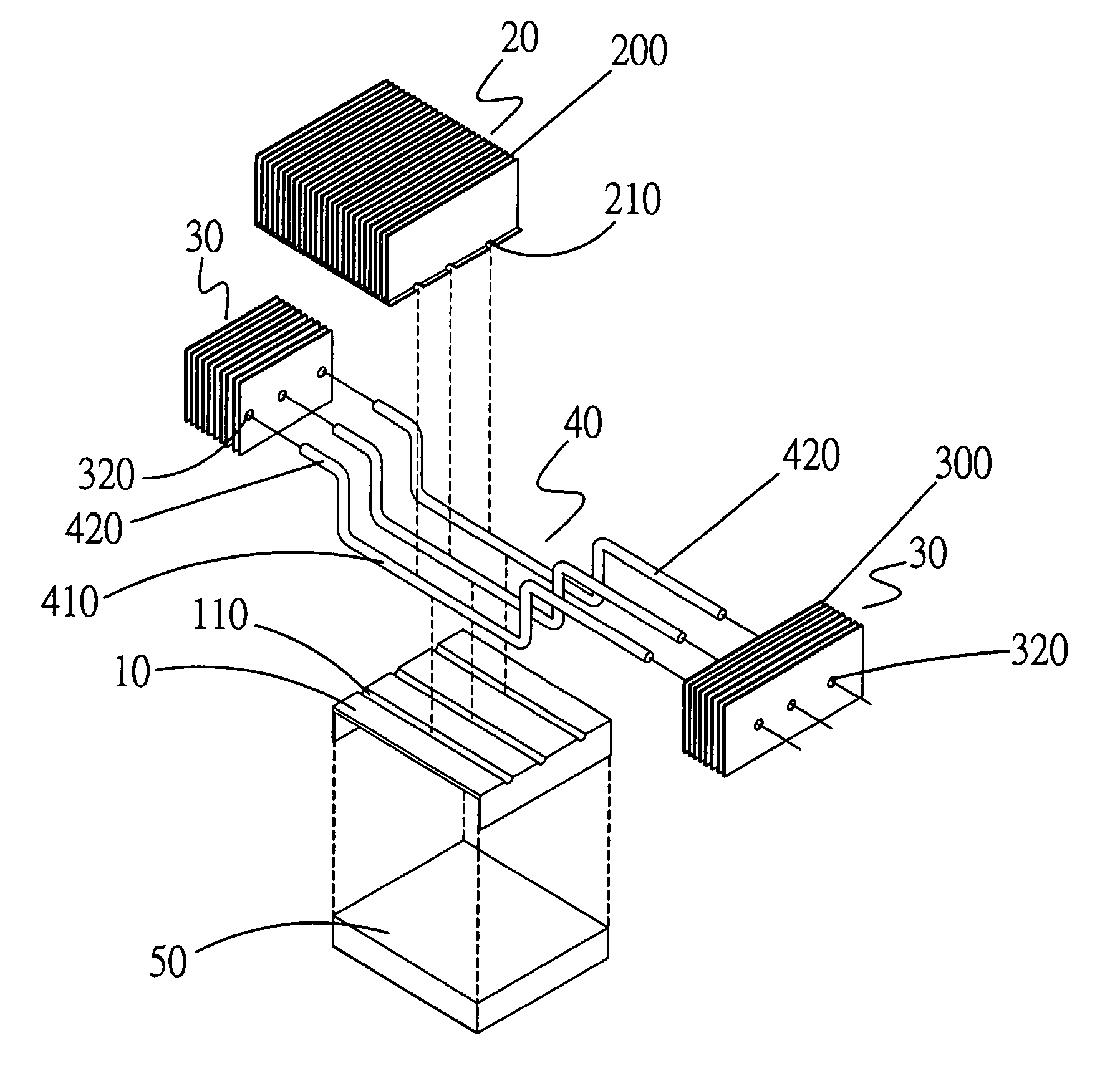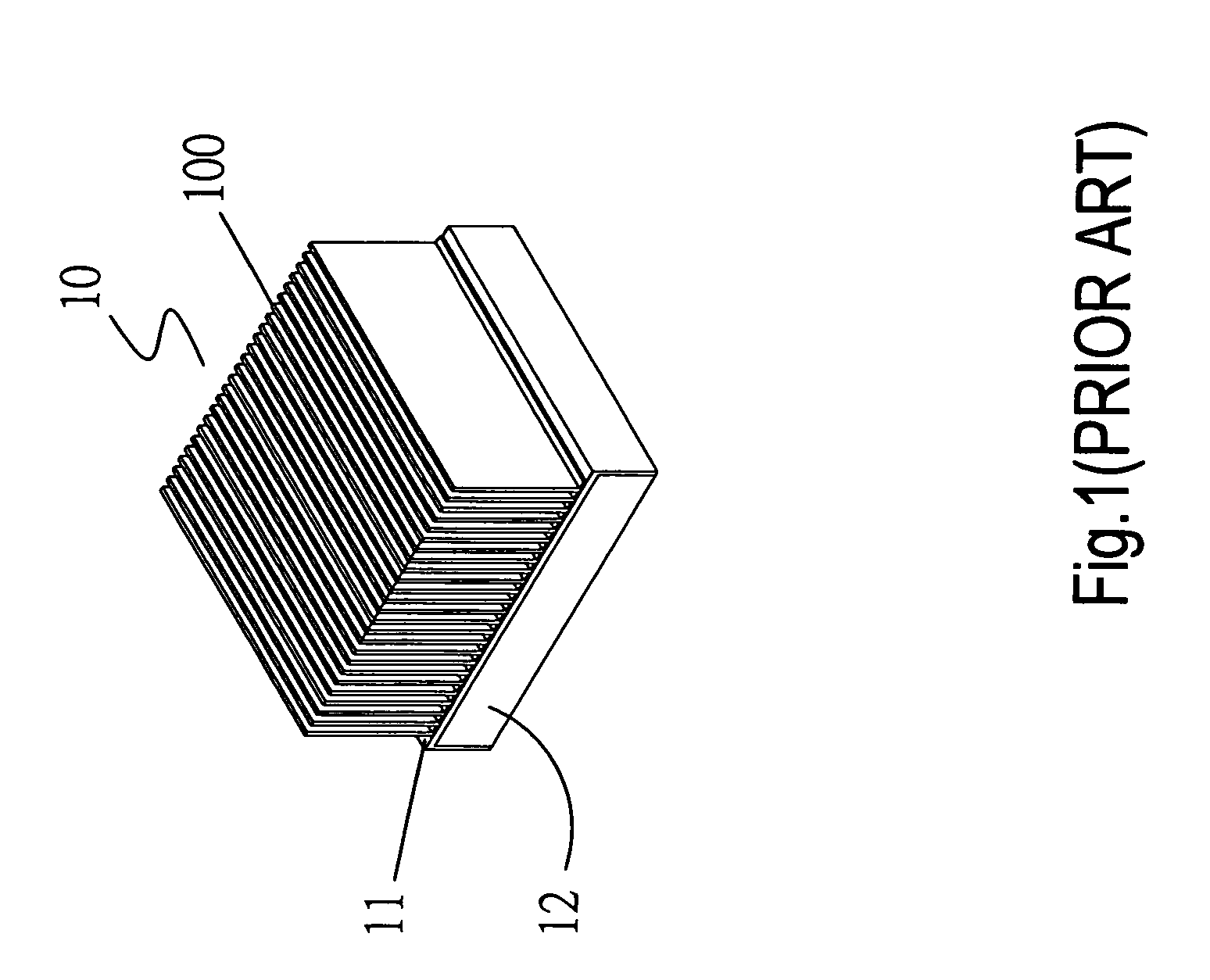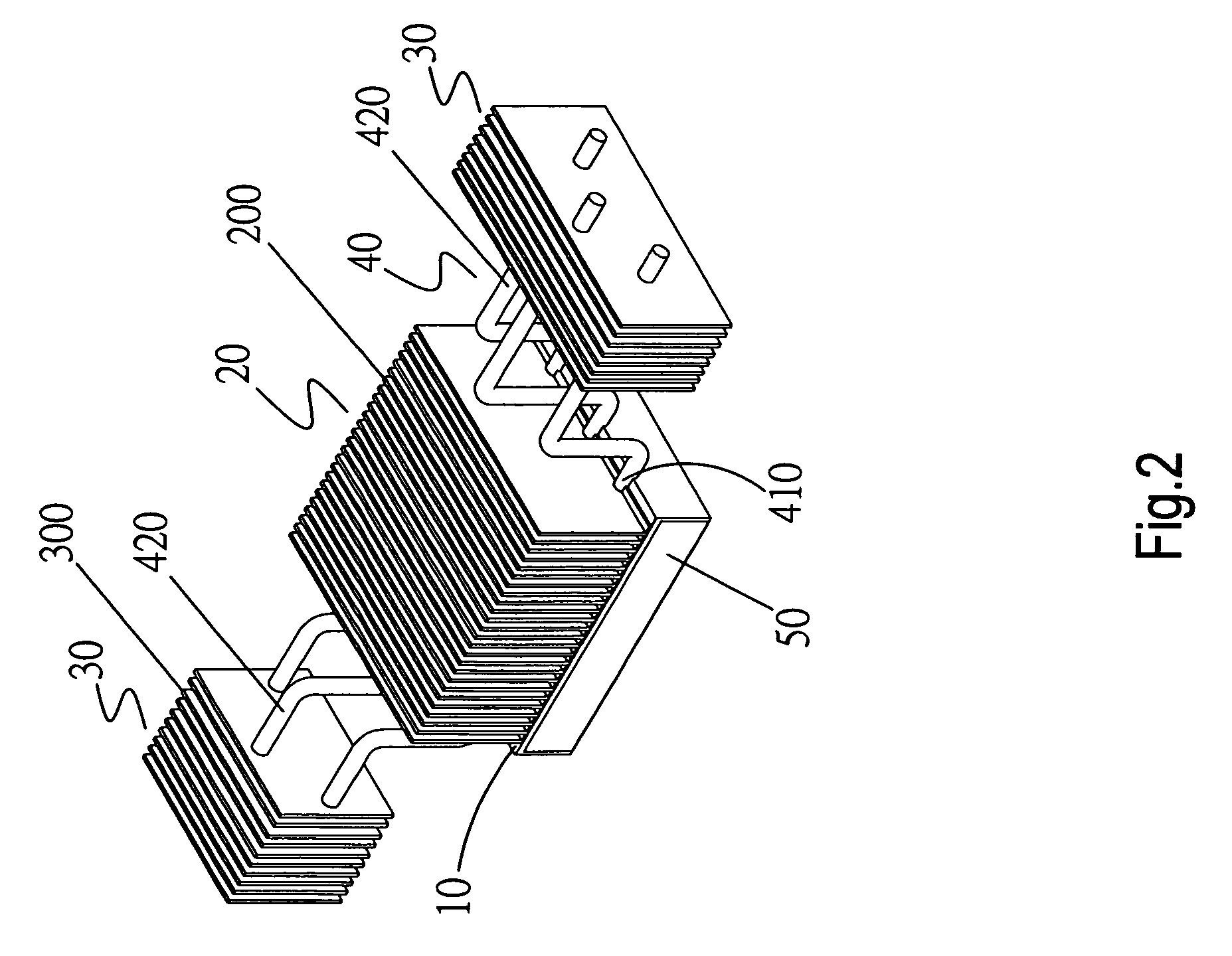Thermal module for light-emitting diode
a technology of light-emitting diodes and thermal modules, which is applied in the direction of semiconductor devices for light sources, lighting and heating apparatus, and support devices for lighting, etc., can solve the problems of adversely shortening affecting the service life of leds, and burning out electronic elements nearby, so as to improve heat dissipation efficiency and increase heat dissipation areas. , the effect of improving heat dissipation efficiency
- Summary
- Abstract
- Description
- Claims
- Application Information
AI Technical Summary
Benefits of technology
Problems solved by technology
Method used
Image
Examples
Embodiment Construction
[0017]Please refer to FIGS. 2 and 3 that are assembled and exploded perspective views, respectively, of a thermal module for LED according to a preferred embodiment of the present invention, and to FIG. 4 that is an enlarged fragmentary front view of the present invention. As shown, the thermal module for LED according to the preferred embodiment of the present invention includes a base 10, a first radiating fin assembly 20, at least one second radiating fin assembly 30, and at least one heat pipe 40. An LED module 50 is in direct contact with one of two opposite sides of the base 10. In the illustrated embodiment, there are provided two second radiating fin assemblies 30. Each of the second radiating fin assemblies 30 consists of a plurality of parallelly arranged radiating fins 300 with a space d1 existing between any two adjacent radiating fins 300 to provide an air passage 310. Heat-carrying airflows (not shown) can smoothly and quickly flow through the air passages 310. With th...
PUM
 Login to View More
Login to View More Abstract
Description
Claims
Application Information
 Login to View More
Login to View More - R&D
- Intellectual Property
- Life Sciences
- Materials
- Tech Scout
- Unparalleled Data Quality
- Higher Quality Content
- 60% Fewer Hallucinations
Browse by: Latest US Patents, China's latest patents, Technical Efficacy Thesaurus, Application Domain, Technology Topic, Popular Technical Reports.
© 2025 PatSnap. All rights reserved.Legal|Privacy policy|Modern Slavery Act Transparency Statement|Sitemap|About US| Contact US: help@patsnap.com



